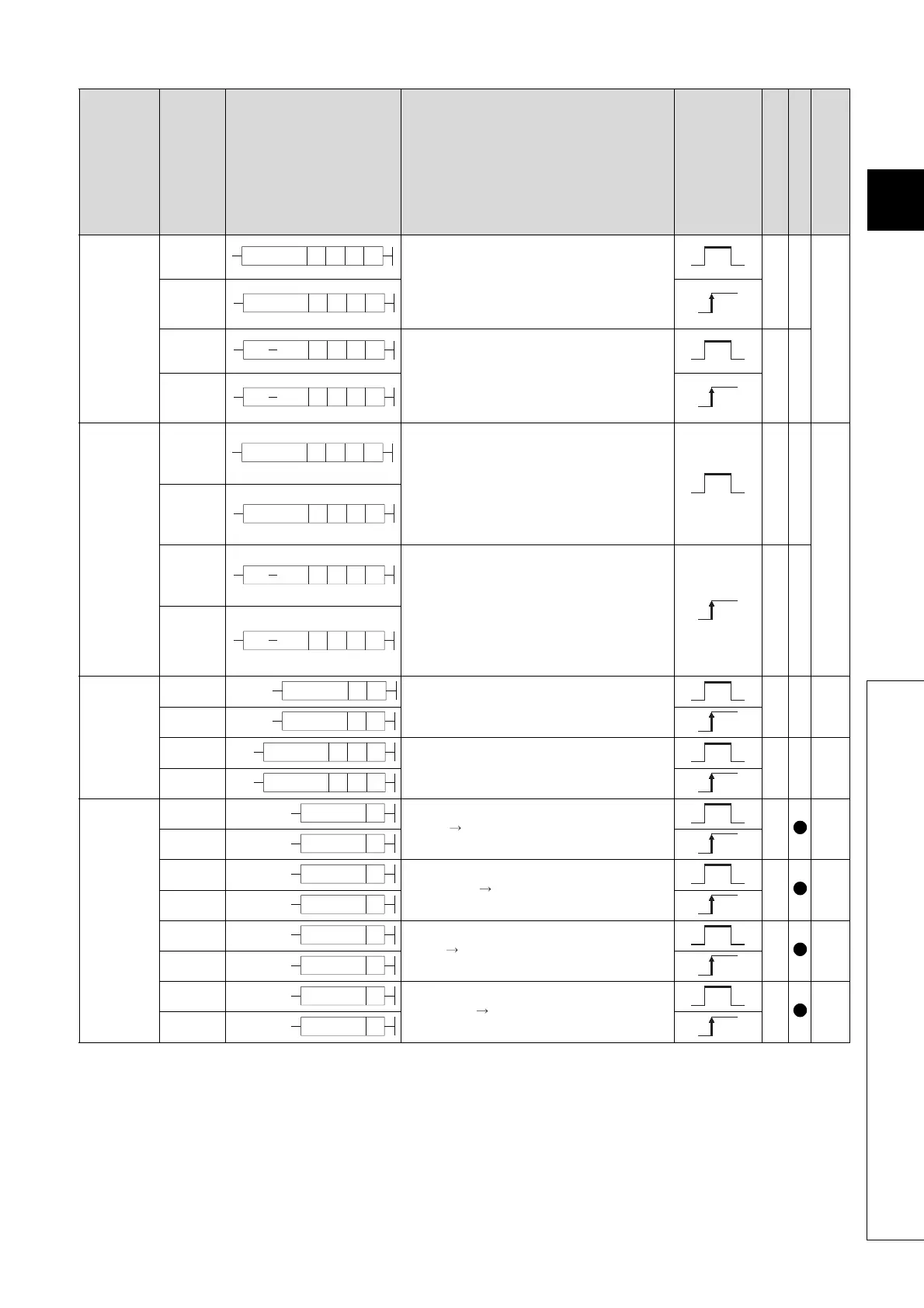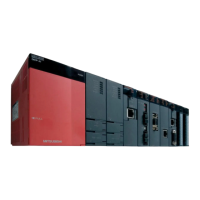43
2
3
4
5
6
7
8
2.4 Basic instructions
2.4.2 Arithmetic operation instructions
Category
Instruction Symbol
Symbol Processing Details
Execution
Condition
Number of Basic Steps
Subset
See for Description
BIN 16-bit
data block
addition and
subtraction
operations
BK+
• This instruction adds BIN 16-bit data stored in
n-point devices starting from the device
specified by (S1) to the n-point data stored in
the devices starting from the device specified
by (S2) in batch.
5-
Page
220
BK+P
BK-
• This instruction substracts BIN 16-bit data
stored in the n-point devices starting from the
devices specified by (S2) from BIN 16-bit data
stored in n-point devices starting from the
device specified by (S1) in batch.
5-
BK-P
BIN 32-bit
data block
addition and
subtraction
operations
DBK+
• Adds BIN 32-bit data stored in the n-point
devices starting from the device specified by
(S1) and a constant to BIN 32-bit data stored
in the n-point devices starting from the device
specified by (S2) and stores the result into the
nth device specified by (D) and up.
5-
Page
222
DBK+P
DBK-
• Subtracts BIN 32-bit data stored in the n-point
devices starting from the device specified by
(S2) or a constant from BIN 32-bit data stored
in n-point devices starting from the device
specified by (S1) and stores the operation
result into the nth device specified by (D) and
up.
5-
DBK-P
Character
string data
Connection
$+
• Links character string designated with (S) to
character string designated with (D), and
stores the result from (D) onward.
3-
Page
225
$+P
$+
• Links character string designated with (S2) to
character string designated with (S1), and
stores the result from (D) onward.
4-
Page
226
$+P
BIN data
increment
INC
•(D)+1 (D)
2
Page
228
INCP
DINC
• (D+1, D)+1 (D+1, D)
*7
Page
229
DINCP
DEC
• (D)-1 (D)
2
Page
228
DECP
DDEC
• (D+1, D)-1 (D+1, D)
*7
Page
229
DDECP
BK+ S1 S2 nD
BK+P S1 S2 nD
BK S1 S2 nD
BK S1 S2 nDP
DBK+ S1 S2 nD
DBK+P S1 S2 nD
DBK
S1 S2 nD
DBK
S1 S2 nDP
$+ SD
$+P SD
$+
S1 S2 D
$+P
S1 S2 D
INC D
INCP D
DINC D
DINCP D
DEC D
DECP D
DDEC D
DDECP D
